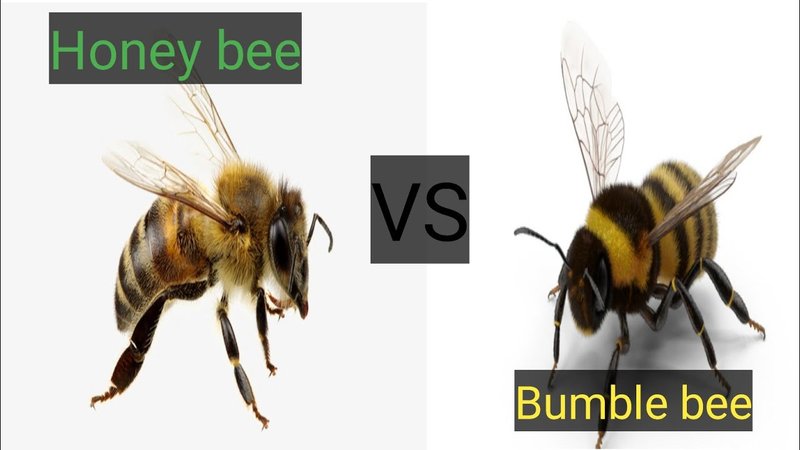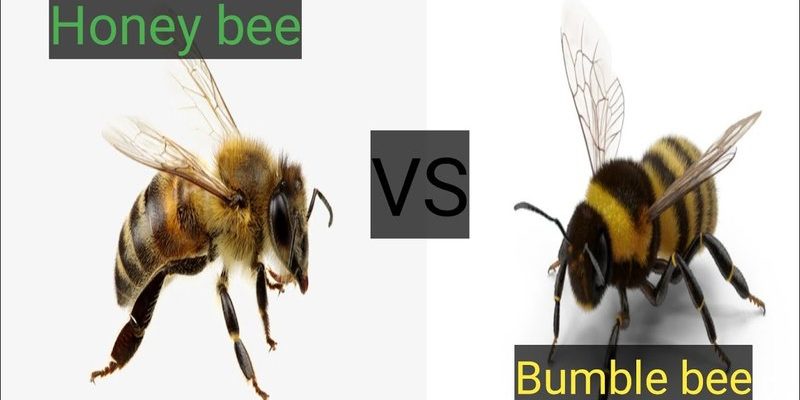
When people think of bees, honey bees usually come to mind. However, there are numerous other insects that resemble them, including bumblebees, wasps, and even some flies. Each of these insects has unique characteristics that set them apart, but they all share fascinating traits that highlight the incredible diversity of nature. So, just grab your favorite drink, kick back, and let’s explore the buzzing world of honey bees and their similar companions.
The Basics of Honey Bees
Honey bees are social insects known for their intricate colonies and vital role in pollination. They’re often recognized by their fuzzy bodies and distinctive black-and-yellow striped pattern. One interesting fact is that honey bees live in structured communities that can number thousands. Each colony is made up of three types of bees: the queen, workers, and drones.
The queen bee’s job is to lay eggs, while workers are responsible for foraging for food, caring for the young, and maintaining the hive. Drones, on the other hand, are primarily there to mate with new queens. This division of labor helps the colony function efficiently. You might be wondering why bees are essential. Well, they pollinate about one-third of the food we eat, making them critical for our food systems.
Bumblebees: The Fluffy Cousins
Bumblebees are often mistaken for honey bees due to their similar size and coloring, but they have a few distinct features. For starters, they’re generally larger and fluffier. Their bodies are covered in thick fur, making them look quite adorable. Bumblebees can also withstand cooler temperatures, which allows them to forage earlier in the spring and later into the fall compared to honey bees.
Another cool fact is that unlike honey bees, bumblebees don’t live in large colonies. They usually have smaller nests, often built underground or in dense vegetation. A bumblebee queen will start a nest in the spring, laying eggs that become workers who help her care for subsequent generations. This means their colonies are smaller and don’t have the same long-term structures that honey bee colonies do.
The Style of Pollination
You might be curious about their pollination styles. While honey bees collect nectar and pollen using their specialized structure, bumblebees have a technique called “buzz pollination.” This is when they vibrate their bodies to shake pollen out of certain flowers. It’s pretty impressive! This adaptation allows bumblebees to pollinate more kinds of flowers, especially those that honey bees might struggle with.
Wasps: The Overlooked Rivals
When you think of wasps, you may picture those pesky creatures that invade your picnic. While wasps share some similarities with honey bees—they both belong to the same order, Hymenoptera—they have distinctly different behaviors and lifestyles. Wasps tend to be slimmer with smooth bodies instead of the fuzzy appearance of honey bees.
Most wasps are predators or scavengers, feeding on insects or other food sources that may not involve nectar. This diet helps maintain the balance of ecosystems, as they control pest populations. Additionally, unlike honey bees, wasps don’t store honey. They do, however, have their own nests, usually made from a paper-like substance they create by chewing wood fibers mixed with their saliva.
The Importance of Wasps
Wasps can be misunderstood, but they also play a crucial role in pollination. They’re attracted to flowers just like honey bees and help in transferring pollen, even if that’s not their primary job. So the next time you see a wasp, remember they contribute to our ecosystem in ways that are just as important—albeit a little different—from honey bees.
Flies: The Unsung Pollinators
Flies, particularly hoverflies, might not be the first insects that come to mind when you think of pollination. But they share some similarities with honey bees! Hoverflies are often mistaken for bees because of their yellow and black coloration, but they’re typically slimmer and have distinct flying patterns, often hovering around flowers.
Interestingly, hoverflies are amazing pollinators. They’re drawn to many of the same flowers as bees, and while they don’t collect pollen in the same way, they do transfer it from one bloom to another. This makes them invaluable to gardens and ecosystems, especially in areas where bee populations are dwindling. You might find these little guys flitting around your garden, happily helping out with pollination duties.
Identifying These Insects
To tell these insects apart, there are a few key features to look for. Honey bees are fuzzy with a robust body, bumblebees are even fuzzier and larger, wasps have smooth, streamlined bodies, and hoverflies resemble bees but are typically smaller and more agile.
Here are some quick tips for identifying these insects:
- Honey Bees: Fuzzy, short hair, robust body, and live in colonies.
- Bumblebees: Larger, super fuzzy, smaller colonies, and good at buzz pollination.
- Wasps: Slim, smooth, predatory behavior, and don’t produce honey.
- Hoverflies: Slim, bee-like appearance, agile flying, and excellent pollinators.
Why Identification Matters
Understanding these differences helps us appreciate their roles in our environment. It’s essential to know what’s buzzing around us—not just for our own safety but to help protect these beneficial insects.
The Role of Each Insect in Ecosystems
Honey bees, bumblebees, wasps, and flies each play unique roles that contribute to the rich fabric of our ecosystems. Bees are essential for food production and biodiversity, while wasps help control pest populations. Hoverflies add to pollination efforts, especially in gardens.
Protecting these insects is crucial. With habitat loss, climate change, and pesticide use threatening their populations, our actions can help them thrive. Planting diverse gardens, avoiding harmful chemicals, and creating pollinator-friendly environments can all make a difference.
In the end, honey bees, bumblebees, wasps, and flies may all share the skies, but each brings something unique to the table. By recognizing their differences and understanding their roles in nature, we can appreciate how crucial they are to our ecosystem. So next time you see a buzzing insect, take a moment to admire its contribution to our world. Whether it’s a honey bee hard at work or a wasp scouting for food, each has its story in the grand tapestry of life.
Let’s keep our gardens buzzing—and ensure the survival of these incredible creatures for generations to come!

